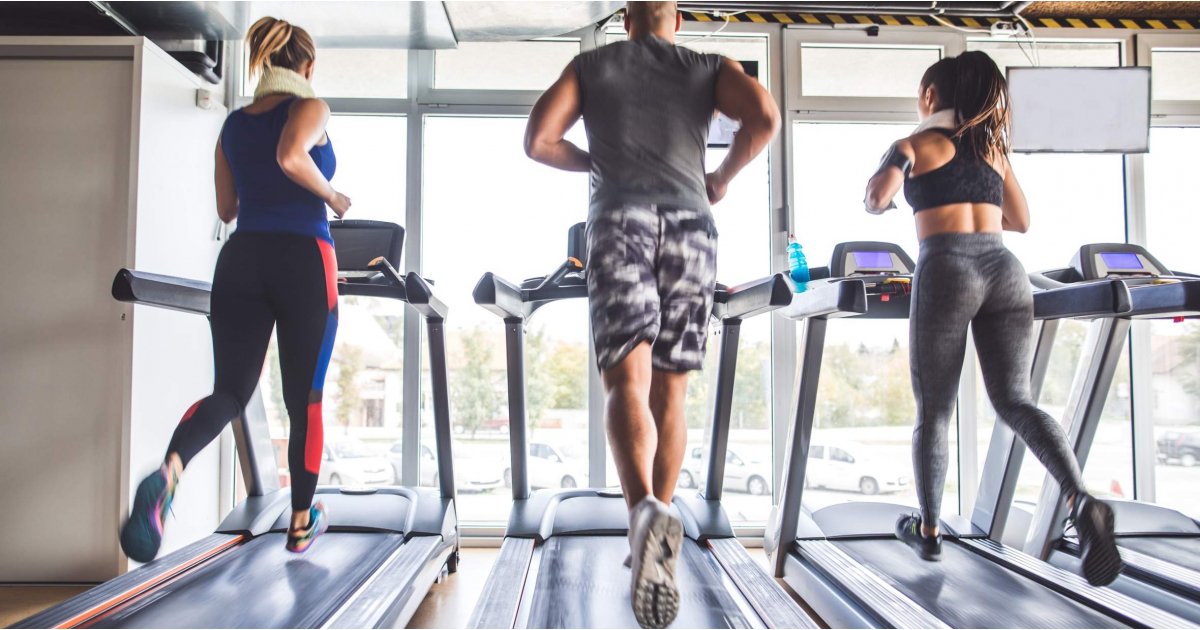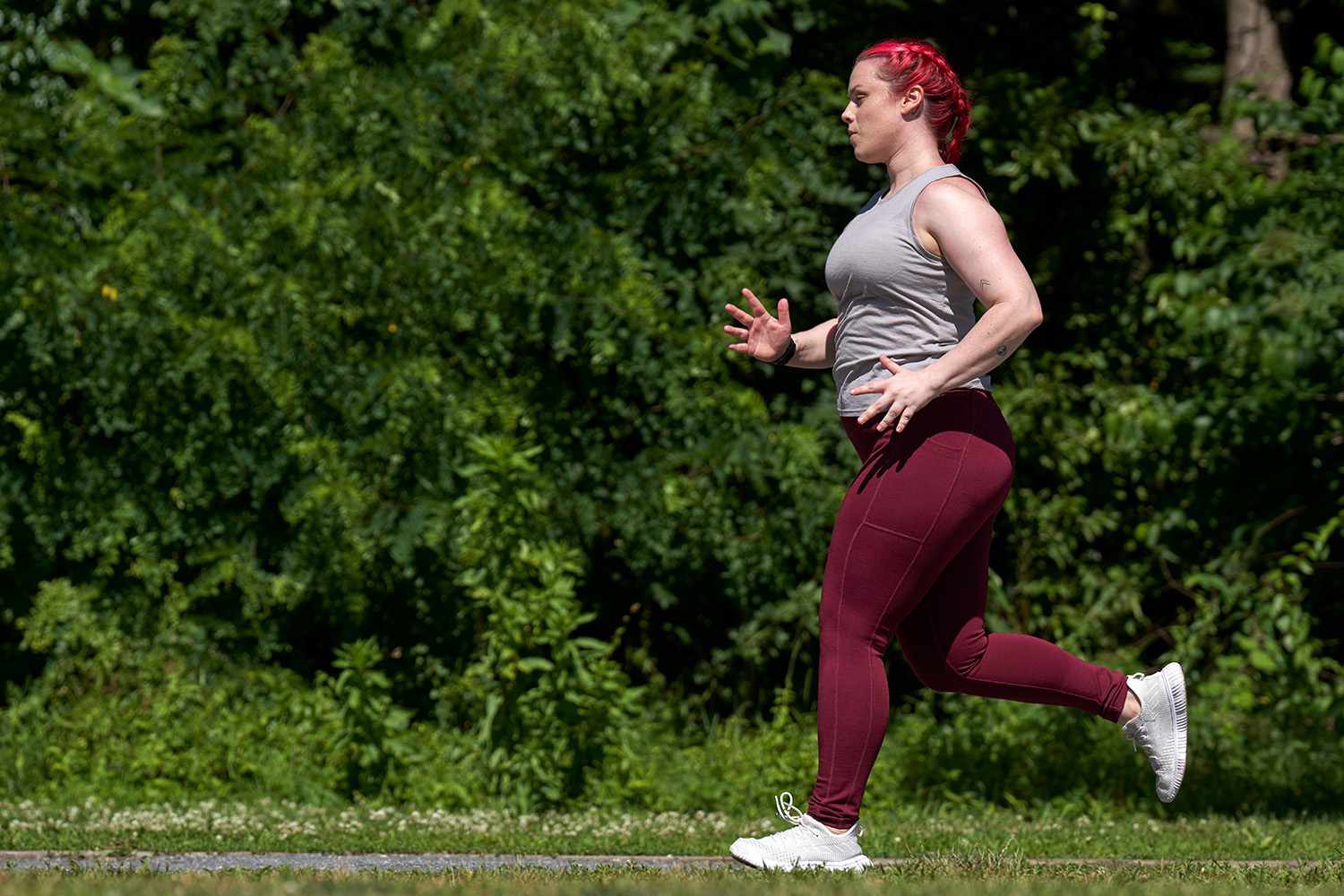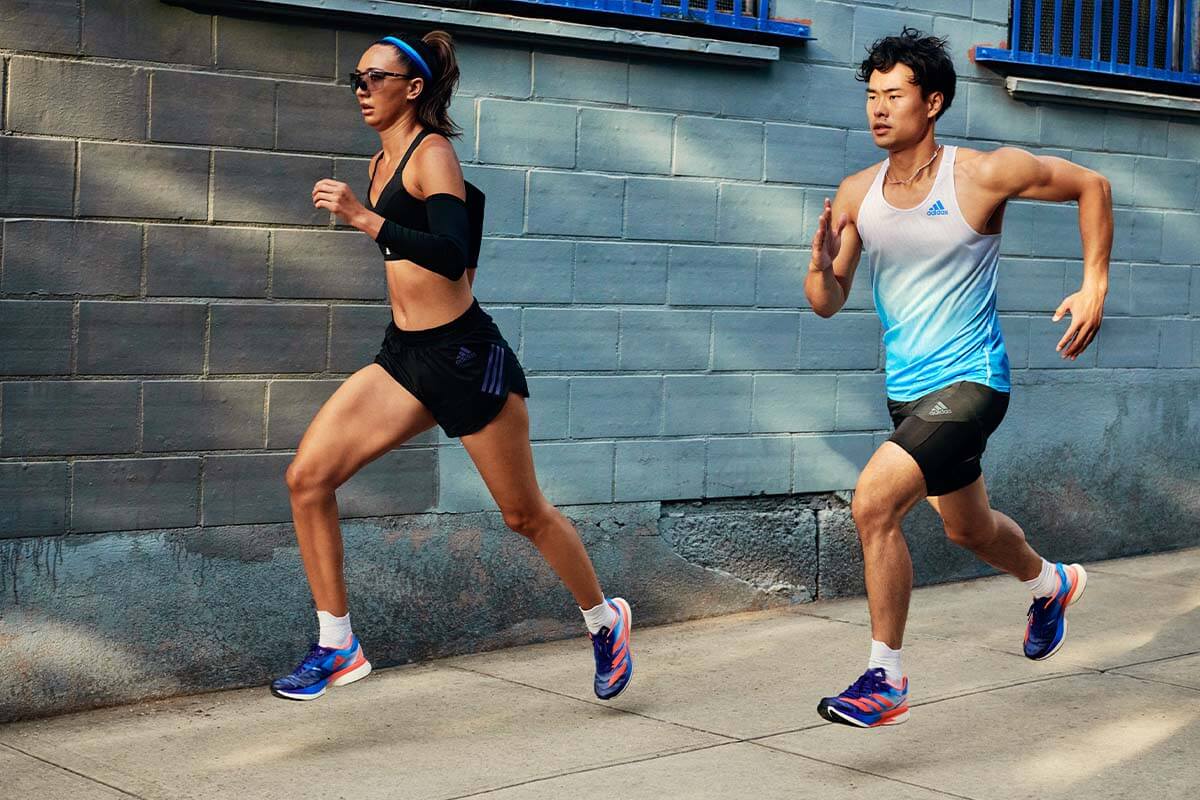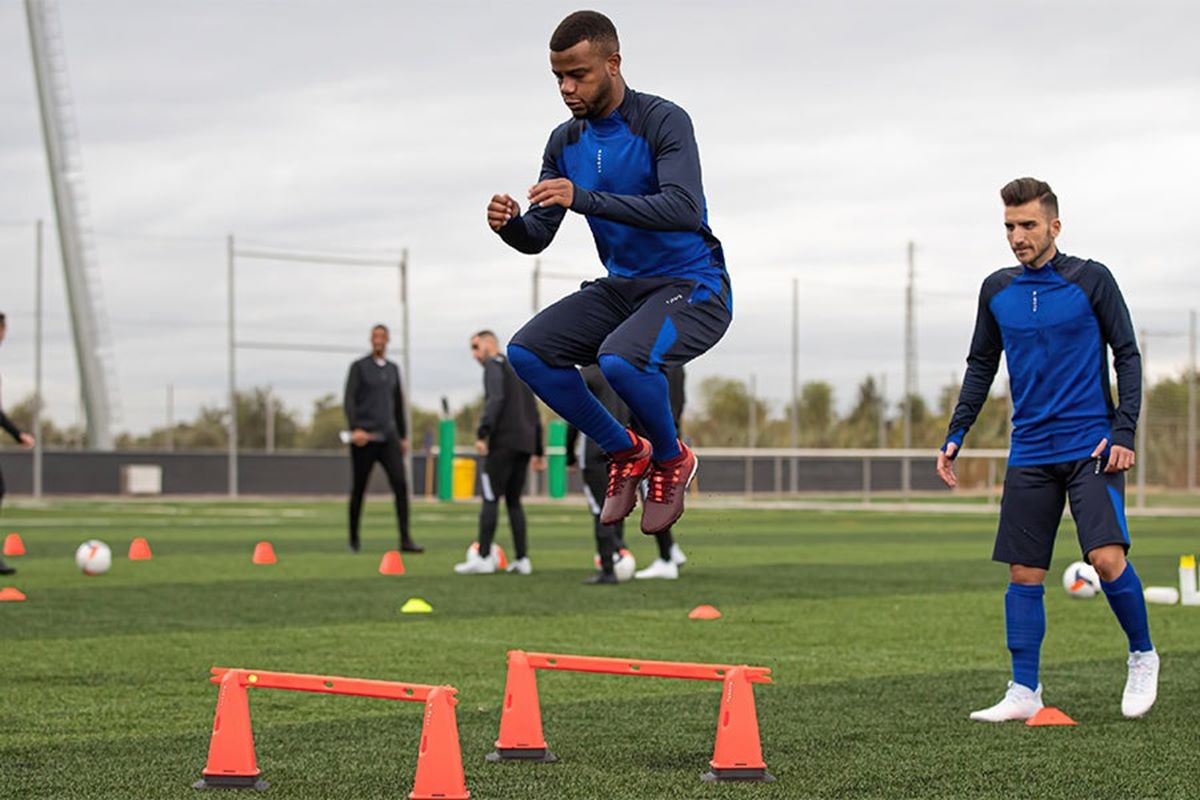Home>Misc>Featured>How To Improve Cycling Speed And Endurance


Featured
How To Improve Cycling Speed And Endurance
Modified: March 1, 2024
Discover effective strategies and tips to enhance your cycling speed and endurance in this featured article. Boost your performance and achieve your cycling goals.
Introduction
Welcome to the world of cycling! Whether you are a seasoned cyclist or just starting out, improving your cycling speed and endurance is a key goal for many riders. Achieving faster speeds and lasting longer on the bike not only enhances your overall performance but also provides a sense of accomplishment and enjoyment during your rides.
Cycling is a fantastic way to stay fit, explore new places, and challenge yourself physically and mentally. However, it can sometimes feel frustrating when you hit a speed plateau or struggle to keep up with your fellow riders. The good news is that with the right training techniques, dedication, and a few adjustments to your routine, you can significantly improve your cycling speed and endurance.
In this article, we will guide you through the process of enhancing your cycling performance. We will cover various aspects, including assessing your current abilities, setting clear goals, planning your training schedule, incorporating interval training, building endurance through long rides, strength training, proper nutrition, recovery, and progress monitoring. By implementing these strategies, you will unlock your full potential and see noticeable improvements in your cycling speed and stamina.
Before we dive into the details, it’s essential to note that improving cycling speed and endurance is a gradual process. Rome wasn’t built in a day, and the same applies to your cycling abilities. It requires commitment, consistency, and perseverance. So, let’s embark on this journey together and discover how you can become a faster and stronger cyclist!
Importance of Cycling Speed and Endurance
Cycling speed and endurance are crucial elements for any cyclist, whether you’re a casual rider or a competitive athlete. They play a significant role in determining your performance level and overall enjoyment on the bike. Here’s why improving these attributes is so important:
1. Enhanced Performance: By improving your cycling speed and endurance, you’ll be able to cover more ground in less time. This means you can accomplish longer rides, conquer challenging terrains, and even participate in races or group rides with more confidence. Your improved performance will make cycling more enjoyable and help you reach new personal milestones.
2. Efficient Workout: Cycling at a higher speed requires more effort, engaging a larger number of muscle groups. This leads to a more efficient workout, providing cardiovascular benefits, strengthening your lower body muscles, and even helping with weight management. By increasing your endurance, you’ll also be able to sustain longer rides without feeling fatigued.
3. Mental Toughness: Cycling is not just a physical activity; it also requires mental stamina. Pushing through challenging conditions, maintaining focus during a long ride, and overcoming fatigue all contribute to mental resilience. By improving your speed and endurance, you’ll build mental toughness, which can translate to other areas of your life as well.
4. Safety and Control: Improving your cycling speed allows you to keep up with traffic better, particularly in urban environments. Being able to maintain a higher speed helps you blend in with the flow of traffic, reducing the risk of accidents. Additionally, having better endurance allows you to maintain control over your bike, especially during longer rides or tough terrains.
5. Sense of Achievement: Setting goals and achieving them is a rewarding experience. Improving your cycling speed and endurance gives you a sense of accomplishment and satisfaction. Whether you’re aiming to beat your personal best on a specific route or complete your first century ride, reaching these goals instills a sense of achievement and boosts your confidence.
6. Sociability: Cycling is not just about solo rides; it’s also a social activity. Being able to keep up with fellow riders or participate in group activities requires a certain level of speed and endurance. Improving these attributes opens the doors to opportunities for group rides, cycling clubs, and making new cycling friends.
As you can see, there are numerous benefits to improving your cycling speed and endurance. Whether you’re looking to challenge yourself, experience the thrill of racing, or simply enjoy longer rides, focusing on enhancing these aspects will take your cycling journey to new heights.
Assessing Your Current Cycling Performance
Before you embark on your journey to improve your cycling speed and endurance, it’s essential to assess your current performance level. This step will help you establish a baseline and identify areas that require improvement. Here’s how you can assess your current cycling performance:
1. Time Trials: Time trials are an excellent way to gauge your cycling speed. Choose a flat route or a segment where you can ride at your maximum effort for a specific distance. Record your time and use it as a benchmark for future improvements.
2. Distance Covered: Pay attention to the distance you can comfortably ride without feeling completely exhausted. This will indicate your current endurance level. Keep track of your longest rides and aim to increase your mileage gradually.
3. Average Speed: Use a cycling computer or mobile app to track your average speed during rides. By knowing your average speed, you can monitor your progress and set realistic goals for improvement.
4. Heart Rate Monitoring: Using a heart rate monitor can provide valuable insight into your effort levels and fitness. Keep an eye on your heart rate during different intensities of rides to gauge how efficiently your body is working.
5. Riding Strengths and Weaknesses: Pay attention to the areas where you excel, such as climbing, sprinting, or maintaining a steady pace. Similarly, identify areas that need improvement, such as downhill descents or riding in headwinds.
6. Self-Assessment: Reflect on how you feel during and after rides. Do you feel fatigued quickly? Do you struggle to maintain a consistent speed? Assess your overall comfort and energy levels on the bike.
By evaluating your current performance, you’ll have a clear understanding of where you stand. Remember, this assessment serves as a starting point and not a judgment of your abilities. Recognizing your strengths and weaknesses will guide your training and help you focus on specific areas for improvement.
Once you have completed a thorough assessment, you’re ready to establish clear goals to work towards. Setting realistic and measurable goals will keep you motivated and provide a roadmap for your training journey. Let’s explore how to set clear goals in the next section.
Setting Clear Goals
Setting clear and achievable goals is vital when it comes to improving your cycling speed and endurance. Goals provide direction, motivation, and a sense of purpose to your training. Here’s how you can set clear goals to guide your journey:
1. Specific and Measurable: Your goals should be specific and measurable. Instead of saying, “I want to improve my cycling speed,” set a specific target, such as increasing your average speed by 2 mph over a certain distance or completing a designated route in a set amount of time. This way, you have a clear target to work towards and can measure your progress accurately.
2. Realistic and Time-Bound: Ensure your goals are realistic and achievable within a specific timeframe. Setting unrealistic goals may lead to frustration and disappointment, while setting goals with no set deadline might result in lack of motivation. Consider your current fitness level, available training time, and other commitments when setting your goals.
3. Long-Term and Short-Term Goals: Break down your overall goal into long-term and short-term goals. Long-term goals could be things like completing a century ride or participating in a cycling event, while short-term goals could focus on improving specific aspects, such as increasing your cadence or tackling a challenging climb. This allows you to track progress in smaller increments and stay motivated along the way.
4. Write them Down: Document your goals in a training journal, a notebook, or on digital platforms. Writing them down holds you accountable and serves as a reminder of what you want to achieve. It also gives you the opportunity to track your progress and celebrate milestones along the way.
5. Flexibility and Adaptability: Keep in mind that goals may need to be adjusted along the way. Factors such as injuries, unexpected circumstances, or changes in fitness levels may require modifying your goals. Be flexible and willing to adapt as needed to continue making progress.
6. Celebrate Milestones: Celebrate your achievements as you reach milestones on your journey. Whether it’s completing a challenging ride or hitting a new personal record, take a moment to acknowledge your hard work and dedication. This will keep you motivated and focused on your future goals.
Setting clear goals provides structure and purpose to your training. It helps you stay focused, motivated, and committed to the process of improving your cycling speed and endurance. With specific targets in mind, you can now move on to the next step: planning your training schedule.
Planning Your Training Schedule
Planning your training schedule is a crucial component of improving your cycling speed and endurance. A well-structured schedule ensures you have a balanced approach, allowing for proper rest and recovery while challenging your body to make progress. Here are some steps to help you plan an effective training schedule:
1. Determine Training Frequency: Decide how many days per week you can commit to cycling training. Aim for a minimum of three to four days to see significant improvements in your speed and endurance. Ensure you have rest days incorporated into your schedule to allow your body to recover and adapt to the training stimuli.
2. Vary Your Training Intensity: Include a mix of low-intensity, moderate intensity, and high-intensity workouts in your schedule. Low-intensity rides help improve aerobic base and aid in recovery, while high-intensity intervals and efforts push your limits, increasing your speed and endurance.
3. Interval Training: Incorporate interval training into your schedule for improved speed and power. Intervals involve alternating periods of high intensity, pushing yourself to go faster or maintain a higher power output, followed by periods of active recovery. This helps improve your anaerobic capacity and overall cycling performance.
4. Long Rides: Plan at least one long ride per week to build endurance. Start with a comfortable distance and gradually increase it over time. Long rides help train your body to sustain effort for extended periods and improve your cardiovascular fitness.
5. Strength Training: Include strength training exercises in your schedule to enhance muscular strength and power. Focus on exercises that target your lower body, such as squats, lunges, and deadlifts. A stronger lower body will help you generate more power on the bike.
6. Recovery Days: Allow for adequate rest and recovery days in your schedule. Rest days are crucial for your body to repair and adapt to the training stress. On these days, engage in light activities, stretching, or foam rolling to aid in recovery and prevent overtraining.
7. Gradual Progression: When planning your schedule, ensure you progressively challenge yourself over time. Gradually increase the duration, intensity, or frequency of your workouts to avoid stagnation and continually stimulate improvements in speed and endurance.
Remember to listen to your body during training. If you feel overly fatigued or experience any pain or discomfort, it may be a sign to adjust your schedule and incorporate more rest or recovery days.
Having a clear training schedule sets the foundation for consistent and effective training. It keeps you organized, motivated, and on track towards your goals. In the next sections, we will explore specific training techniques that can help boost your cycling speed and endurance.
Incorporating Interval Training
Interval training is a powerful method to improve your cycling speed and endurance. By incorporating structured intervals into your training, you can push beyond your comfort zone, increase your aerobic and anaerobic capacities, and enhance your overall performance on the bike. Here’s how you can effectively incorporate interval training into your cycling routine:
1. Determine Your Intensity Zones: Start by establishing your intensity zones based on your fitness level and goals. This can be done using metrics such as heart rate zones, power zones, or perceived exertion levels. Understanding your personal zones will help you tailor your intervals to the appropriate intensity.
2. Choose Your Interval Duration: Select the duration of your intervals based on your goals and training objectives. Short intervals, ranging from 30 seconds to 2 minutes, focus on developing your anaerobic capacity and sprinting power. Longer intervals, typically 3 to 5 minutes or even longer, target your aerobic endurance and ability to sustain high intensities.
3. Plan Your Interval Workouts: Design your interval workouts based on your chosen duration and intensity. For example, an interval session might consist of 8 to 10 repetitions of 1-minute intervals at a high intensity, followed by a 1-2 minute recovery period. Alternatively, you could do longer intervals, such as 4 x 4 minutes at 90% of your maximum effort, with 3 minutes of rest between each interval. Be creative and mix up your interval workouts to keep them challenging and engaging.
4. Warm-Up and Cool-Down: Prior to starting your interval session, always include a proper warm-up to prepare your body for the intense effort. Start with 10-15 minutes of easy pedaling, gradually increasing the intensity. After your intervals, allow for a proper cool-down period, including 5-10 minutes of gentle pedaling and stretching to aid in recovery.
5. Progression and Variation: As your fitness improves, gradually increase the intensity, duration, or number of intervals in your workouts. This progressive overload will help you continue challenging yourself and making further gains. Additionally, consider varying the type of intervals you do, such as pyramid intervals (gradually increasing and then decreasing the intensity) or Tabata intervals (short, intense efforts with very short recovery periods).
6. Listen to Your Body: It’s important to listen to your body during interval sessions. If you are unable to complete the prescribed intervals at the desired intensity, it could be an indication that you need to adjust the intensity or take an extra recovery day. Pushing too hard without adequate recovery can lead to overtraining and a decrease in performance.
Interval training is an effective way to boost cycling speed and endurance. By incorporating structured intervals into your routine, you can challenge yourself, improve your cardiovascular fitness, and develop the ability to sustain higher intensities for longer periods. As you become comfortable with interval training, you can progress to more advanced interval workouts and continue to reap the benefits of this powerful training method.
Building Endurance through Long Rides
Long rides are a key component in building endurance and increasing your cycling speed and stamina. These extended rides provide an opportunity to push your limits, improve aerobic capacity, and develop the mental fortitude needed for sustained efforts on the bike. Here’s how you can effectively build endurance through long rides:
1. Start Gradually: If you’re new to long rides, start with a distance that challenges you but is still manageable. Gradually increase the mileage as your fitness level improves. Aim to add a few extra miles to your long rides each week or extend the duration by a set amount of time.
2. Choose Suitable Terrain: Select a route with a terrain that matches your cycling goals. For building endurance, incorporating some challenging climbs or rolling hills can help simulate the intensity and effort required in longer rides. Varying the terrain will also engage different muscle groups and improve overall fitness.
3. Pace Yourself: Long rides are not about going all out from the start. Pace yourself and find a sustainable rhythm that allows you to cover the intended mileage comfortably. Start with a moderate intensity and focus on maintaining a steady effort throughout the ride.
4. Fuel and Hydration: Proper nutrition and hydration during long rides are crucial to sustain energy levels and prevent fatigue. Plan your fueling strategy by consuming carbohydrates and electrolytes at regular intervals. Carry enough water or have access to refilling stations to stay adequately hydrated throughout the ride.
5. Mental Preparation: Building endurance requires mental fortitude. Stay focused and positive during long rides, reminding yourself of your goals and the progress you’ve made. Break the ride into smaller, manageable sections or use landmarks as milestones to keep yourself motivated and engaged.
6. Explore New Routes: Long rides provide an excellent opportunity to explore new routes and discover scenic landscapes. Plan your rides to include interesting destinations or places you’ve always wanted to visit. Exploring new routes adds excitement to long rides and keeps them enjoyable.
7. Recovery and Reflection: After completing a long ride, prioritize recovery. Engage in gentle stretching, foam rolling, or other recovery techniques to help your body recover and reduce muscle soreness. Take time to reflect on the ride, celebrate your accomplishments, and adjust your training plan as necessary for future long rides.
Building endurance through long rides takes time and consistency. Be patient with yourself and gradually increase the distance and intensity of your rides. Over time, you will notice improvements in your ability to sustain effort and cover longer distances, leading to enhanced cycling speed and endurance.
Strength Training for Cycling Performance
Strength training is a valuable addition to your cycling routine, helping to improve cycling speed and endurance. By incorporating targeted exercises, you can enhance muscular strength, power, and stability, leading to improved performance on the bike. Here’s how you can effectively implement strength training for cycling:
1. Focus on Lower Body: Since cycling primarily engages the lower body, your strength training should focus on exercises that target these muscle groups. Squats, lunges, deadlifts, and leg presses are effective compound exercises that work multiple muscle groups, including the quadriceps, hamstrings, glutes, and calves.
2. Include Core and Stability Exercises: A strong core provides stability and control while cycling. Include exercises like planks, Russian twists, and bridges to strengthen your core and improve balance. Additionally, work on stability exercises such as single-leg exercises and Bosu ball exercises to improve proprioception and balance on the bike.
3. Incorporate Plyometric Exercises: Plyometric exercises involve explosive movements that can enhance power and improve your ability to generate force on the bike. Exercises like box jumps, squat jumps, and power cleans can help develop explosive strength in your legs.
4. Train Unilateral Movements: Unilateral exercises help address muscular imbalances and promote equal strength development on both sides of the body. Single-leg squats, step-ups, and single-leg deadlifts are beneficial for improving balance, stability, and reducing the risk of injuries caused by imbalances.
5. Maintain Proper Form: When performing strength exercises, it is essential to maintain proper form to maximize benefits and reduce the risk of injury. Engage a personal trainer or do research to ensure you are executing each exercise correctly. Focus on a full range of motion, control, and gradually increase the weights or resistance as your strength improves.
6. Schedule Strength Training Sessions: Aim to incorporate strength training sessions into your weekly routine. Start with two to three sessions per week, allowing at least one day of rest between sessions to allow for muscle recovery. Consider alternating lower body and core exercises to avoid excessive fatigue in specific muscle groups.
7. Adapt to Your Cycling Season: Adjust your strength training routine based on your cycling season and goals. In the off-season or base training phase, focus on building strength and muscle. As your cycling season approaches, decrease the frequency and intensity of your strength training to ensure adequate recovery and prevent interference with your cycling performance.
Remember, strength training should complement your cycling training and not replace it. Do not excessively fatigue yourself with strength training if it negatively impacts your cycling workouts. Progressive and consistent strength training will help you develop the muscular strength and power needed to improve your cycling performance.
Proper Nutrition for Improved Speed and Endurance
Proper nutrition plays a vital role in improving cycling speed and endurance. Fueling your body with the right nutrients helps optimize energy levels, enhance performance, and support recovery. Here are some key considerations to improve your nutrition for cycling:
1. Balanced Macronutrient Intake: Aim for a balanced intake of carbohydrates, proteins, and fats. Carbohydrates provide the primary source of fuel for cycling, so focus on consuming complex carbohydrates like whole grains, fruits, and vegetables. Include lean proteins like chicken, fish, eggs, and plant-based sources for muscle repair and recovery. Don’t neglect healthy fats from sources like nuts, avocados, and olive oil for energy and overall health.
2. Pre-Ride Fueling: Consume a well-balanced meal or snack before your ride to ensure you have enough energy to sustain your effort. Opt for a combination of carbohydrates and protein, such as oatmeal with fruit and Greek yogurt, or a whole-grain sandwich with lean protein. Aim to eat 1-3 hours before your ride to allow for digestion.
3. On-the-Bike Nutrition: During longer rides, consuming carbohydrates is essential to maintain proper energy levels. Carry easily digestible snacks like energy bars, gels, or fruits with you. Aim to consume around 30-60 grams of carbohydrates per hour, depending on the intensity and duration of your ride. Remember to hydrate adequately during your ride as well.
4. Post-Ride Recovery: After your ride, prioritize recovery by consuming a combination of carbohydrates and protein within 30-60 minutes. This helps replenish glycogen stores and promotes muscle repair. Consider options like a protein shake, chocolate milk, or a meal containing lean protein, complex carbohydrates, and vegetables.
5. Hydration: Staying properly hydrated is crucial for optimal performance. Start your rides well-hydrated and continue to drink water throughout your ride. For longer rides or rides in hot and humid conditions, consider electrolyte-enhanced drinks to replace lost electrolytes. Monitor your urine color to ensure you are adequately hydrated.
6. Individualized Approach: Everyone’s nutritional needs may vary, so it’s important to listen to your body and find what works best for you. Experiment with different foods and hydration strategies during training to see what boosts your energy and enhances your performance. Consult with a sports dietitian for personalized guidance if needed.
7. Consistency: Consistency is key when it comes to nutrition. Fueling your body properly is not a one-time fix, but a continuous practice. Maintain a well-balanced diet and establish good eating habits not just for your rides, but also for overall health and well-being.
Remember, nutrition is an important piece of the puzzle in improving cycling speed and endurance. By fueling your body with the right nutrients, you can optimize your performance, enhance your recovery, and enjoy your rides to the fullest.
Recovery and Rest Days
Recovery and rest days are often overlooked but are vital components of any training plan designed to improve cycling speed and endurance. These rest periods allow your body to repair, adapt, and come back stronger for future rides. Here’s why recovery and rest days are important and how to incorporate them into your training:
1. Muscle Repair and Growth: During intense workouts, your muscles undergo microtears that need time to repair and rebuild. Recovery days provide the necessary time and resources for this process. Without adequate recovery, the risk of overuse injuries and a decrease in performance increases.
2. Energy Restoration: Intense cycling sessions deplete your energy stores, such as glycogen. Rest days allow for replenishing these stores, ensuring you have the energy required for future workouts. It also helps prevent burnout and fatigue caused by continuous training without sufficient recovery.
3. Mental Refreshment: Physical fatigue goes hand in hand with mental fatigue. Rest days provide an opportunity to recharge mentally, allowing you to maintain focus and motivation during your future rides. Taking breaks from cycling prevents training from becoming monotonous and helps reignite your passion for the sport.
4. Injury Prevention: Overtraining and inadequate rest can lead to overuse injuries, as your body does not have enough time to recover and repair damaged tissues. Incorporating rest days reduces the risk of these injuries, giving your body the chance to heal and adapt to the demands of training.
5. Active Recovery: Rest days don’t necessarily mean complete inactivity. Engage in light activities or active recovery exercises to promote blood flow and facilitate muscle recovery. Gentle stretching, mobility exercises, or low-intensity activities like yoga or swimming can help with muscle relaxation and improve overall recovery.
6. Individualized Rest Schedule: The frequency and timing of rest days may vary depending on your training volume, intensity, and individual recovery needs. Typically, one or two rest days per week are recommended. However, some cyclists may require more frequent or fewer rest days based on their fitness level, age, and overall health. Listen to your body and adjust your rest schedule accordingly.
7. Cross-Training: Consider incorporating cross-training activities into your rest days. Engaging in other physical activities such as strength training, swimming, or yoga can provide a change of pace, benefit overall fitness, and work different muscle groups, complementing your cycling training.
Don’t underestimate the importance of recovery and rest days in your training plan. Prioritizing recovery allows your body to adapt to the stress of cycling, reducing the risk of injuries, improving performance, and ensuring long-term progress. So, embrace the rest, and come back stronger for your next ride!
Monitoring Progress and Making Adjustments
Monitoring your progress is essential for tracking your improvements in cycling speed and endurance. It allows you to assess the effectiveness of your training and make necessary adjustments to keep progressing. Here’s how you can effectively monitor your progress and make informed adjustments to your training plan:
1. Track Performance Metrics: Use technology such as a cycling computer or smartphone app to track metrics like average speed, distance covered, and heart rate during your rides. Monitoring these metrics over time provides valuable insight into your progress and helps identify areas that need improvement.
2. Regular Time Trials: Conduct regular time trials on a designated route to gauge your progress. Record your time and compare it to previous attempts to track improvements in your speed and endurance. Time trials also provide a benchmark for setting new goals and targeting specific areas for improvement.
3. Assess Subjective Feelings: Pay attention to how you feel during and after rides. Notice any changes in your energy levels, perceived effort, and overall comfort on the bike. Subjective feelings give you insight into how your body is adapting to training and can help identify areas that need attention.
4. Keep a Training Journal: Maintain a training journal where you can record your rides, training sessions, nutrition, and any observations or insights. This journal serves as a valuable resource for tracking your progress, identifying patterns, and making adjustments to your training plan as needed.
5. Regular Assessments and Testing: Periodically reassess your current fitness level through fitness tests or assessments. These could involve measuring your maximum power output, anaerobic threshold, or conducting a VO2 max test. Fitness assessments provide objective data on your progress and can help guide adjustments to your training plan.
6. Listen to Your Body: Pay attention to any signs of overtraining or burnout. If you consistently experience extreme fatigue, decreased motivation, or performance plateaus, it may be a sign that you need to adjust your training plan to allow for more rest or recovery. Be flexible and willing to make modifications based on your body’s feedback.
7. Seek Professional Guidance: If you’re unsure about monitoring your progress or making adjustments to your training plan, consider consulting a coach or sports professional. They can provide expert guidance, help interpret your data, and create a customized training plan tailored to your specific needs and goals.
By regularly monitoring your progress and making appropriate adjustments, you can continue to improve your cycling speed and endurance. Remember that progress is not always linear and that adjustments may be necessary along the way. Stay committed, stay adaptable, and enjoy the journey towards becoming a faster and stronger cyclist!
Conclusion
Improving your cycling speed and endurance is a gradual process that requires dedication, consistency, and a focused training approach. By assessing your current performance, setting clear goals, planning your training schedule, incorporating interval training, building endurance through long rides, incorporating strength training, prioritizing proper nutrition, and allowing for sufficient recovery, you can unlock your full potential and achieve noticeable improvements in your cycling performance.
Remember that each cyclist is unique, and progress may vary from person to person. It’s important to listen to your body, make adjustments as needed, and celebrate small victories along the way. Building speed and endurance takes time, so be patient and enjoy the journey of progress and growth.
Additionally, seek opportunities to connect with fellow cyclists, join group rides or cycling clubs, and share experiences and advice. The cycling community can provide support, motivation, and inspiration as you work towards becoming a faster and stronger cyclist.
So, gear up, hop on your bike, and start implementing these strategies to improve your cycling speed and endurance. Embrace the challenges and relish the achievements that come with it. With dedication, consistency, and a passion for the sport, you’ll pave the way to becoming the best cyclist you can be. Happy cycling!









